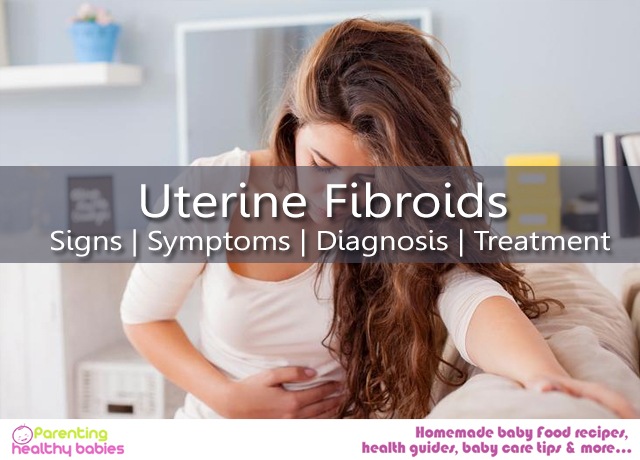A women has the worldly privilege to give birth and promote life further which to apprise, is no easy deed to do. Therefore it is important for the female to take care of herself. Proper health guidance and appropriate ways of living their life is hence essential to be ensured of. So a woman and her doctor will monitor the health conditions to exclude or prevent certain clinical conditions. The physician will also treat non pregnancy-related medical conditions in such a way as to promote the appropriate physical and neurological development of the future fetus. Conditions of particular importance include absolute mental state of mind along with a healthy body. Many females though suffer with a condition known as uterine fibroids.
Uterine fibroids are benign tumors of uterus. They are majorly composed of the smooth muscle cells of uterine walls. These have a minimum risk of turning cancerous and most women with uterine fibroids have no symptoms. However, fibroids can cause a number of symptoms depending on their size, location within the uterus, and how close they are to adjacent pelvic organs.Uterine fibroids are usually round. In most cases, fibroids do not cause pain or other symptoms. However, exceptionally large fibroids may cause pressure on the bladder or other organs, leading to specific symptoms.
Uterine Fibroids Signs, Symptoms, Diagnosis and Treatment
Signs and symptoms are most commonly (for both small and large fibroids):
- Unusual bleeding
- Heavy period flow
- Cramps and localized lower abdominal pain
- Lower back pain
- pelvic pain, including pain during sex
- pressure on the bladder with frequent or even obstructed urination
- Pressure on the rectum with painful or difficult defecation
- Severe iron deficiency anemia
Fibroids are most often found during a routine pelvic examination. This, along with an abdominal examination, may indicate a firm, irregular pelvic mass to the physician. Uterine fibroids are diagnosed by:
1. Pelvic exam
A pelvic exam is a doctor’s visual and physical examination of a woman’s reproductive organs. During the exam, the doctor inspects the vagina, cervix, fallopian tubes, vulva, ovaries, and uterus.
2. Ultrasound
An ultrasound test uses high-frequency sound waves to create images of your internal organs. A trans-vaginal ultrasound, also called an endo-vaginal ultrasound, is a type used by doctors to examine female reproductive organs. This includes the uterus, fallopian tubes, ovaries, cervix, and vagina.
3. X-rays
In the examination, an X-ray machine sends a beam of radiation through the pelvis and an image is recorded on special film or a computer. An X-ray of the pelvis focuses specifically on the area between your hips that has many of your reproductive and digestive organs.
4. MRI
An MRI scan uses magnets and radio waves to capture images inside your body without making a surgical incision. The scan allows your doctor to see the soft tissues of the body, such as muscles and organs, without your bones obstructing the view.
5. Endometrial biopsy
Endometrial biopsy to take a small tissue sample from the lining of the uterus (endometrium) for study. The endometrial tissue is viewed under a microscope to look for abnormal cells. Your healthcare provider can also check the effects of hormones on the endometrium.
6. Blood test performed to detect severe iron deficiency anemia due to heavy blood loss history.
Since most fibroids stop growing or may even shrink as a woman approaches menopause. With this approach, the health care provider monitors the woman’s symptoms carefully to ensure that there are no significant changes or build outs and that the fibroids are not growing. In women whose fibroids are large or are causing significant symptoms, treatment may be necessary. Treatment may include:
1. Hysterectomy
A hysterectomy is a surgical procedure whereby the uterus (womb) is removed.
2. Conservative surgery
An operation that is the least aggressive, often most tissue-conserving therapy for a condition here it is myomectomy. It removes fibroids and leaves the uterus intact for further pregnancies.
3. Hormone therapy
This approach lowers levels of estrogen and triggers a “medical menopause.” Sometimes Gonadotropin Releasing Hormone agonists are used to shrink the fibroid, making surgical treatment easier.
4. Anti-hormonal agents
A substance that blocks the action or inhibits the production of a hormone.Certain drugs oppose estrogen (such as progestin), and appear effective in treating fibroids.
5. Anti-inflammatory pain killers
Non-steroidal anti-inflammatory drugs, are a type of pain reliever. At prescription doses, these drugs also curb inflammation.
There are no known home remedies that can shrink fibroids. If uterine fibroids are not causing any problematic symptoms, they can be left alone without specific treatment. If they are large enough to cause symptoms like bleeding, pain, or pressure, medical or surgical treatment is required.













